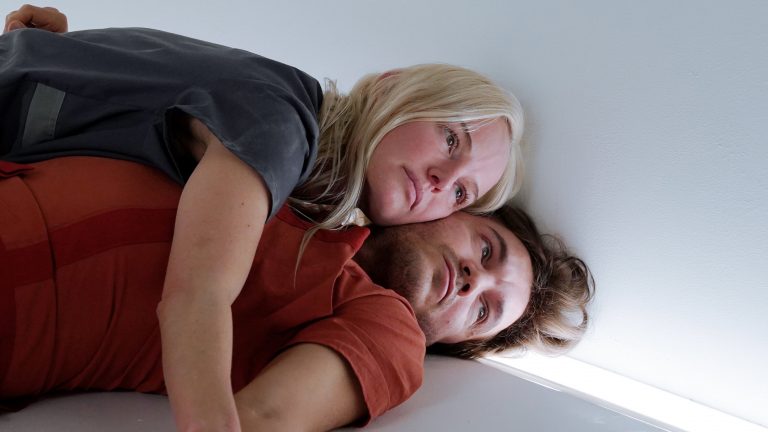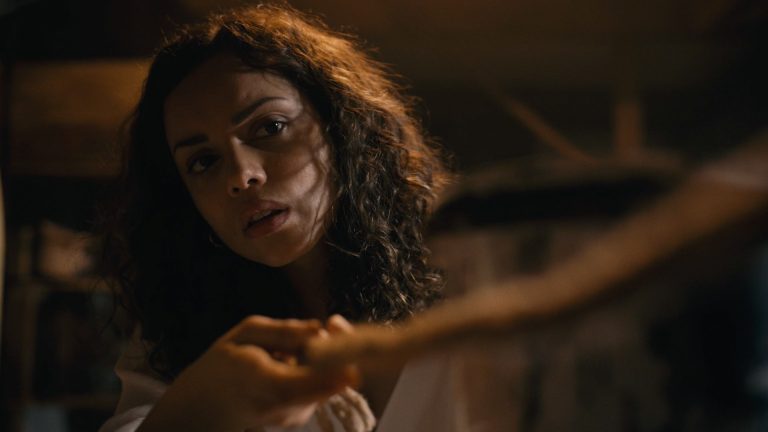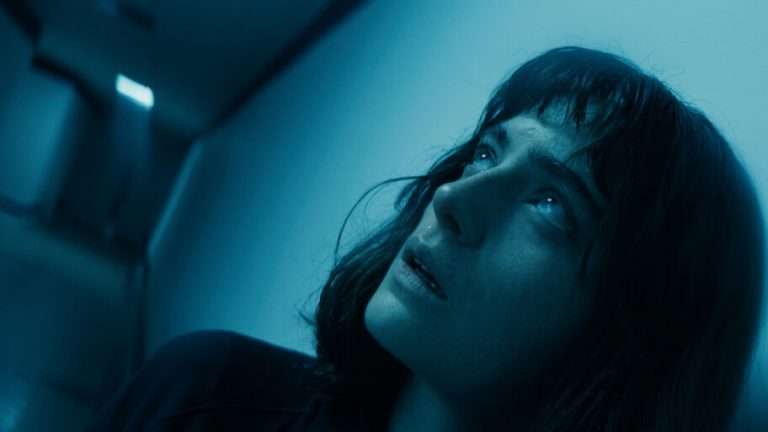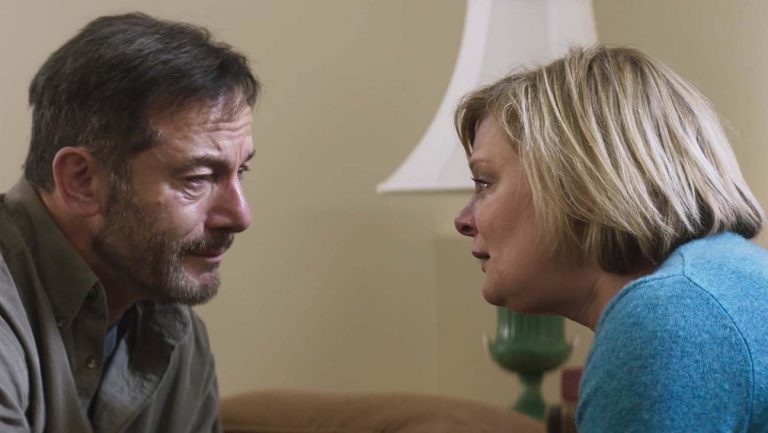“I wanted to give it the feeling of a punk song.” This was director Milos Pušić’s response when asked about how he developed the visual language for Working Class Heroes (2022). And indeed, it all too feels like a no holds barred, angry punk metal song. How would it not? When producing a film focusing on the exhaustive unprotected working condition of daily wage laborers at unregistered work sites without timely remuneration and unregulated working hours, embodying the anti-establishment ethos of punk music into the visual language of the film seems to be the right way to go.
Working Class Heroes follows the protest of the ‘Professor’ and his crew of daily wage laborers who, after months without pay at a work site in Novi Sad, Serbia, formulate a plan to blackmail their employers, the real-estate construction company – Magnus Donus Buildings, into paying their due wages. The film acts as both – a microcosm for the larger economic situation in Serbia, which Pušić seems to argue is mounting with unemployment and excessive corruption under a capitalist market – and, despite its local placement, a universal tale of unmonitored workplace place hazards and human rights violence at the workplace. With the many controversies surrounding the human rights violation and labor crisis at the FIFA World Cup in Qatar, Pušić’s film is as relevant as ever.
The film picks up from the perspective of Lidija, the Public Relations representative of Magnus Domus Buildings. This point-of-view gives a unique perspective to the story as audiences are introduced to the masculine world of construction workers through the eyes of a woman. The POV changes again when the Professor and his crew are introduced, but we are not given enough time with them to understand who they are or anchor any form of empathy for them. The narrative goes on to follow a constant back-and-forth pattern, with the POVs shifting from Lidija to each of the six crew members working under the Professor. This results in a lack of coherence early on in the film as viewers are left dazed, and unable to construct a narrative around any single character or idea. However, the slow beginning eventually picks up once Pušić introduces a common enemy for the main characters, allowing for the creation of a good vs. bad dichotomy which makes the film much more accessible. Although, this results in the film losing its nuance as multiple parallel narratives and their complexities are streamlined into one.
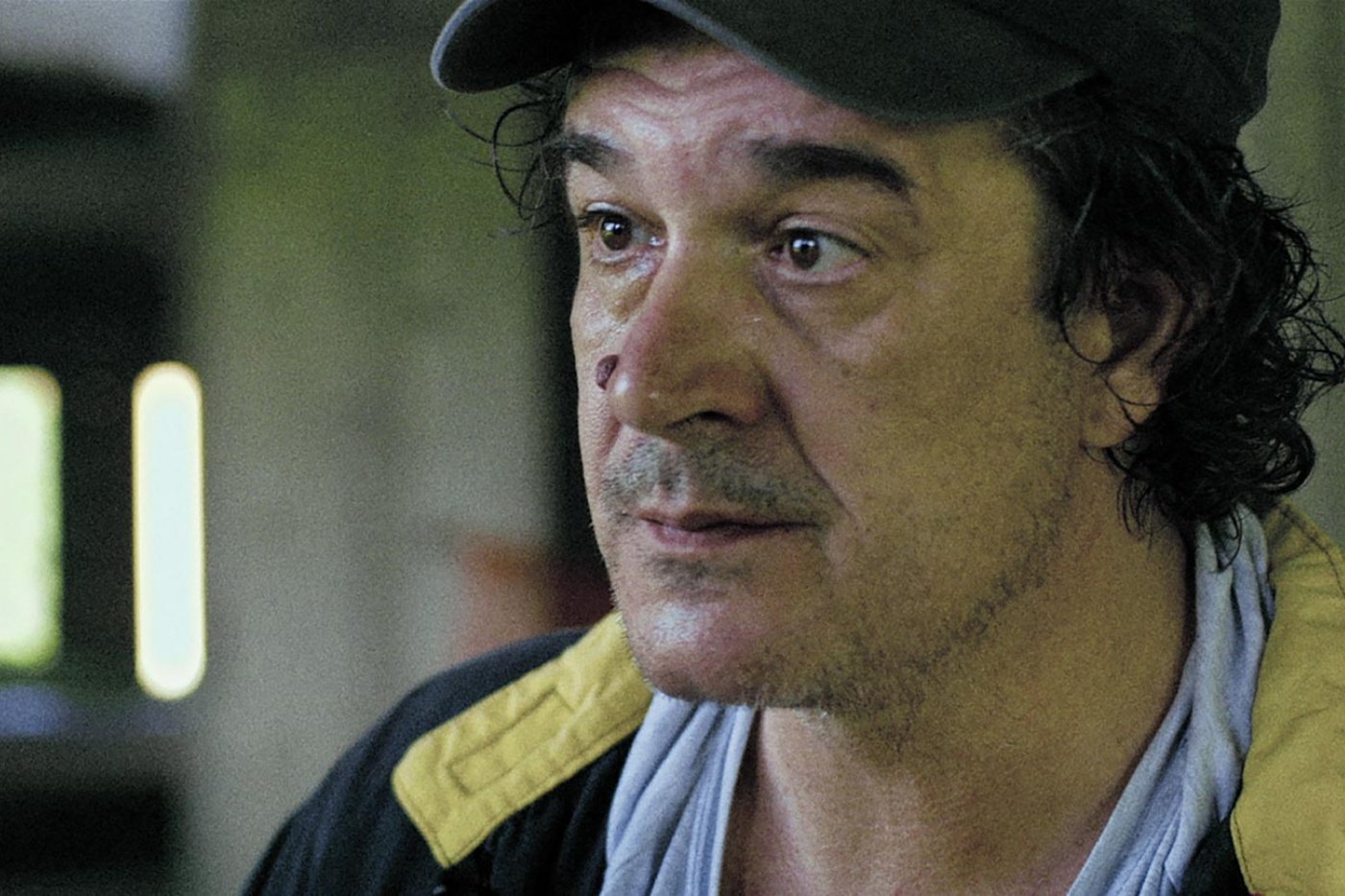
The lead characters of the film all suffer huge debts and are forced to work jobs beyond their professional discipline to make ends meet. For example, the ‘Professor’ seems to have actually been a professor but is now forced to work at construction sites because of a lack of employment opportunities in academia under an uber-capitalist economy that values businesses and commercial endeavors over scholarship and research. Similarly, the ‘Kid,’ a fellow crew member of the Professor, full of potential and heart, carves out a promising future for himself and his beloved from his savings at work. However, he succumbs to a life-threatening injury at his workplace and is later killed by the owner of the construction company to prevent delays in future investments that may arise from the controversy surrounding workplace death. To remove traces of his body, he is buried under the construction site with cement.
In another instance that happens early on in the film, the Kid runs a forklift over the leg of one of his colleagues. While this was initially done intentionally to avail workplace injury benefits, it eventually turned out to be a genuine accident but was brushed off by the construction company. The construction site, without any safety precautions, is depicted to be a space for many such accidents. Thus, the half-built building that the ‘heroes’ work on becomes a prison for them where; their professional education is reduced to mindless physical labor; they get injured without any safety precautions and rot away as they do not get their salaries on time for medical treatment and eventually die and get buried under it. When everything is done and dusted, the outside world has only presented the myth of the ‘Working Class Heroe’ as the laborers of the construction site are spoken for by the construction company owner during inauguration ceremonies of the building they worked on, bled and died in thereby losing any form of agency to express their dissenting voices.
In addition to some of the faults in the films mentioned above, the title of the film presents an obviousness in the storyline and plot development which takes away from the viewing experience. While the climax is highly impactful and tilts its head towards previous development in the film in a clever manner, the aforementioned obviousness in the plot defuses the tension of the scene and leaves more to be desired.
On the other hand, Pušić’s editing is what stands out the most in the film. He juxtaposes the scenes depicting the many hardships and suffering of the laborers with the comfort and luxury experienced by the owners of the construction company who strut around in expensive suits, dine and drink from the fanciest restaurants, and party at the most expensive nightclubs with beautiful escorts. The juxtaposition brings forth the stark income inequality that has been a result of Serbia’s ever-growing capitalist economy as it moves away from its Soviet past and aligns more with western ideals and modernity. Working Class Heroes presents a microcosm of not only a modern Serbian society but the world as a whole, where capitalism has led to the death of thousands because of poor working conditions. Through the incorporation of real physical laborers as part of the professional cast, the films provide some form of agency to daily wage laborers who often get spoken for by capitalist overlords, lose any right to individual expression, and are silenced under the monolithic label of working-class heroes.



